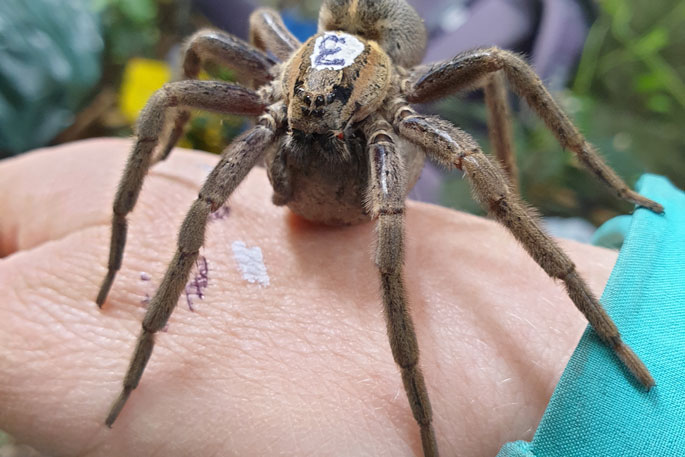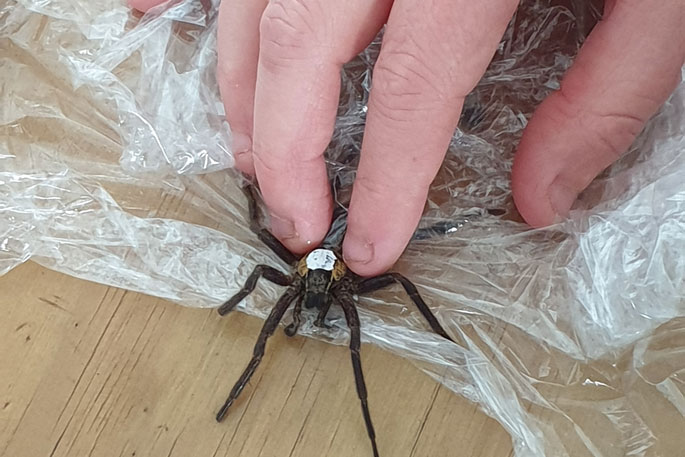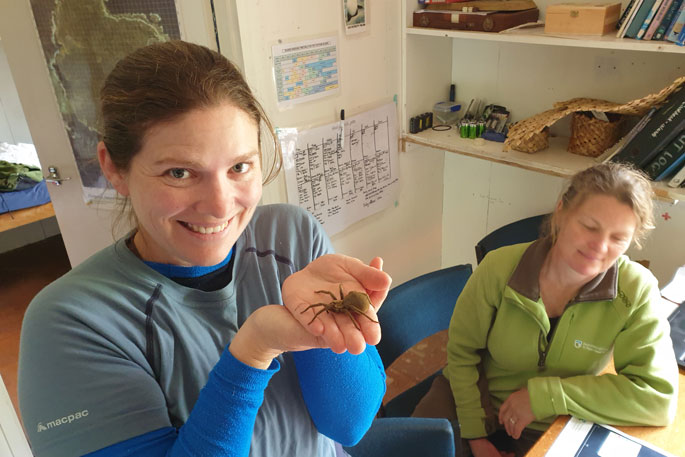A Marsden Fast-Start grant is going to give University of Waikato behavioural ecologist and senior lecturer Dr Chrissing Painting the time and opportunity to learn more about something that would keep most normal people awake at night - the sex lives of spiders.
Dr Painting's research will look into Dolomedes fishing spiders in particular, a group that shows remarkable variation in mating systems. They're found in New Zealand and widely across the globe.
'I am broadly interested in finding out why animals are so variable in their behaviour and appearance,” Dr Painting says.
'We're trying to figure out what drives some of those evolutionary processes to look and act differently among groups of closely related species.
'Within that I'm really interested in mating system evolution – trying to understand why in some species individuals mate with a single partner for life, while others mate many times – and all the variation in between.
'Generally speaking we see male animals trying to maximise their reproductive success by mating lots of times, while females tend to choose fewer, high-quality mates.”

Dr Painting says the rarer phenomenon of monogyny, where males mate only once in their lifetime, tends to be associated with behaviour like the male redback spider that somersaults itself into the jaws of the female after mating, or the lifelong fusing of tiny parasite males to female anglerfish.
Her study uses spiders to try and uncover why monogyny exists within a species and thereby paint a broader picture of evolution.
The Fast-Start project focuses on Dolomedes fishing spiders to identify all the different elements that describe an animals mating behaviour and discover which of them are integral to the evolution of that system.
Complex systems biology, network science and phylogenetic analyses will the allow the team to look at the links between the elements from an evolutionary viewpoint.
'There are four species of Dolomedes in New Zealand, three here on the mainland and one on several remote islands of the Chatham Island archipelago. Across the globe there are over 100 species of them so they're a big group that we can use to tease apart what might be driving variation in mating behaviour.
'For one of the American species, the male spontaneously dies after he mates – his heart literally stops beating – and he remains attached to the female, so she eats him. But we know that there's lots of variation along a continuum for this group of spiders.
'In contrast to this extreme monogyny with spontaneous male death and sexual cannibalism, we also have early evidence that other species in the genus mate with multiple partners.”

Dr Painting says this variation in one group of spiders provides a fantastic model system for further investigation.
Dr Painting has joined up with colleagues Professor Eileen Hebets from the University of Nebraska-Lincoln, Associate Professor Matjaž Kuntner from the National Institute of Biology in Slovenia, and Dr Dion O'Neale at University of Auckland.
'We're basically trying to answer why, when you have a whole group of related species, do you see so much variation? Why aren't they all doing the same thing?
'If we work toward understanding this, we can begin to understand why variation in animal behaviour and appearance exists –.a fundamental question for evolutionary biology.”




0 comments
Leave a Comment
You must be logged in to make a comment.